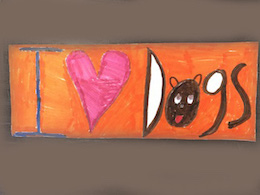SUBJECTS
GRADE
Show Results
Media and Creating Meaning
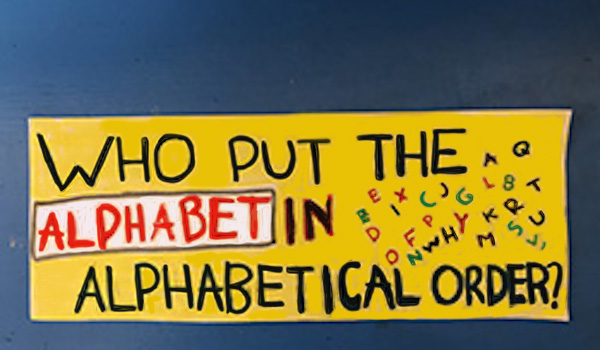
Lesson Summary
- Explore how media messages have embedded values and points of view.
- Design a bumper sticker and billboard for a particular purpose.
- Work in groups to collaborate on media messages.
Lesson Plan and Procedure
Lesson Key Facts
- Grade(s): 3, 4, 5, 6
- Subject(s): English Language Arts, Media Arts, Visual Arts
- Duration of lesson: 45 minutes
- Author(s): Dr. Amy Jensen
Invitation to Learn
Share several bumper stickers with students. These can be projected using examples provided in the PowerPoint presentation, or you can provide several bumper stickers for the students to handle and examine closely. (slides 1-8)
Teacher: All media messages are “constructed” (created, built, or assembled) by media makers. What tools have the artists or media makers used to construct their message on the bumper stickers? (Possible answers include color, catchy phrases, icons, symbols, plays-on-words, and images.)
Have each student pick and examine one bumper sticker carefully. Ask the students to consider what message the media maker is sending and why they might want to send the message. Tell the students they will be given time to create their own bumper stickers.
Teacher: Your bumper sticker must send a message that is important to you. Remember that bumper stickers often include both words and pictures to convey the messages that they are sending. Take time to brainstorm and then start to work on your bumper stickers.
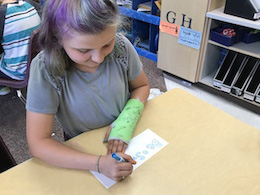
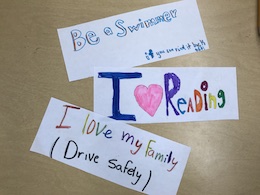
Provide students time to brainstorm and work on their bumper stickers. Have students pair-share their bumper stickers.
Teacher: As you pair-share, talk about the message that you are sending through the bumper sticker, and explain how you think the words and images effectively send that message.
Have the students adjust and fix anything on their bumper stickers they wish to. They can complete their work as homework or during free time.
Instruction and Design
Teacher: When media makers want to send a message to the average person, they work to do the following:
- Create a clear message that is evident in both words and images. Sometimes these messages might be called “position statements.” Position statements express the particular need the product or service fills. (slide 9)
- Identify a target audience, or the people most likely to have an interest in the message. When identifying a target audience, it is important to get as many people as possible to value the message. (slide 10)
- Make sure your ad targets your audience and represents your message. (slide 11)
Share one of the Faux Paw the Techno Cat advertising campaigns with the students: https://www.youtube.com/channel/UCORrK3o2wt2oufFtwgm9sBA.
Ask the students to identify the key message or theme of the advertising campaign (internet safety for children), note the target audience, and explain how the media makers helped a wide variety of people to value the message they were sending. Explain that in designing an effective media message (bumper sticker, public service announcement, advertising campaign, billboard), all options require a position statement and a clear target audience. Allow time for the students to ask questions or make statements about the advertising campaign.
Split the students into groups of three or four.
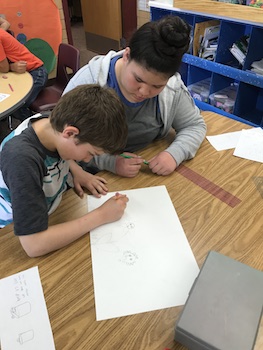
- Select a product name.
- Create a position statement, or a clear message about the product.
- Identify a target audience for the product (slide 12).
When your group has answered the questions, create a billboard that sells the product. Consider and respond to the following questions:
- How will the media story we want to tell look? What images and colors will we use?
- Who will tell the story? Will there be a celebrity in our media story? Will there be regular people? Why will this choice be important to our target audience?
- How can we best communicate our position statement or theme?
Give students time to work on their billboards. Depending on the availability of Chromebooks, iPads, and computers, you may have the groups design on tech devices. Or you may have them create a billboard image on cardstock. Have the students share their finished products with the rest of the class. Have each group assess their billboard using the questions and criteria listed above.
Extensions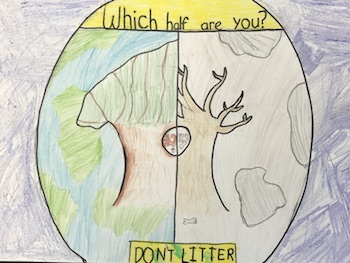
- Have students choose one form of advertising (such as television ad, print ad, billboard) that they will analyze outside of class. Have them write a short paper about an ad they find that discusses its position statement, target audience, and ways that it appealed to that target audience.
- Examine newspapers or other journalistic material for position statements and target audiences to identify differences in news coverage and possible slants in news material.
- Have students create an entire ad campaign that extends into other subject areas.
- Visual art: Design print ads/billboards
- Drama: Act out television ads
- Music: Write a jingle for the product
- Have students look at billboards, ads, and public service announcements with their parents. Have the students consider what message is being sent on the billboards.
Learning Objectives
- Determine messages communicated by an image.
- Generate an innovative idea for art-making.
- Apply knowledge of available resources, tools, and technologies in the art-making process.
- Recognize and analyze how media messages are intentionally constructed.
- Recognize and analyze how people experience the same message differently.
- Identify messages to create and present as a media product.
Utah State Board of Education Standards
This lesson can be used to meet standards in many grades and subject areas. We will highlight one grade’s standards to give an example of application.
Grade 6 Visual Arts
Standard 6.V.CR.1: Combine concepts collaboratively to generate an innovative idea for art-making.
Standard 6.V.CR.2: Formulate an artistic investigation of personally relevant content for creating art.
Standard 6.V.CR.3: Demonstrate openness in trying new ideas, materials, methods, and approaches in making works of art and design.
Standard 6.V.CR.6: Reflect on whether personal artwork conveys the intended meaning, and revise accordingly.
Standard 6.V.R.2: Compare one’s own interpretation of a work of art with the interpretation of others.
Grade K–5 Elementary Library Media
Strand 10: Awareness, modern citizenship, and informed decision making
*Standard 1: Define basic terms and concepts of media.
*Standard 2: Recognize that media messages are intentionally constructed.
*Standard 3: Recognize that people experience the same message differently.
Strand 11: Analyze, question, and think critically
*Standard 1: Analyze techniques used to construct media messages.
*Standard 2: Analyze the impact of media messages on a receiver.
Strand 13: Produce and present
*Standard 1: Identify messages for presentation, using a multi-step process, by determining intent, content, audience, and length.
*Standard 2: Develop and apply criteria for quality media productions.
*Standard 3: Create, present, and evaluate the final product.
Equipment and Materials Needed
- Paper for each student to design a bumper sticker
- Bumper stickers PowerPoint presentation
- Faux Paw the Techno Cat advertising campaigns: https://www.youtube.com/channel/UCORrK3o2wt2oufFtwgm9sBA
- Paper for group billboard or technological devices for designing
- Art supplies such as markers, crayons, colored pencils, sharpies
Additional Resources
- History of Bumper Stickers video https://vimeo.com/155544007
Image References
Images 1-6: Brenda Beyal

www.education.byu.edu/arts/lessons
 Download
Download